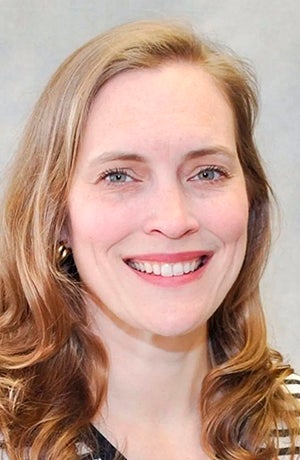My Point of View: Mayo swinging wrecking ball at rural health care
Published 8:45 pm Tuesday, December 12, 2023
|
Getting your Trinity Audio player ready...
|
My Point of View by Jennifer Vogt-Erickson
Mayo Clinic is leading the way in ripping up health care in rural Minnesota.
Mayo promised the Austin hospital would be here for us when it consolidated Albert Lea’s beds to Austin starting in 2017. Not only was this a bitter pill to swallow, it’s also turning out to be an empty promise.
Some of our patients are being sent to many different places because Mayo is not staffing enough beds in Austin, so I’ve been working on figuring out what the overall picture looks like.
I recently crunched Minnesota Department of Health (MDH) data to prove that southeastern Minnesota is experiencing the least hospital bed availability of any rural region of the state for medical and surgical and ICU care this year. Through Nov. 21, 95% of medical and surgical beds in the region were filled, and 94% of ICU beds were full on a daily basis. This is the region that Mayo dominates.
In contrast, in the southwest region of the state, 69% of medical and surgical beds and 67% of ICU beds were full on a daily basis during the same time period.
The traditional target for rural hospitals is filling 80-85% of beds. It’s a lower percentage than what the metro aims for because efficiencies look different in rural areas than in urban areas.
Our numbers in southeast Minnesota indicate that Mayo is not staffing enough beds by a significant margin. This shortage is having a direct impact on many people in our community and surrounding areas who have been unable to get hospital care in Austin.
Patients are not widgets to move hither and thither at Mayo’s convenience, and distances matter.
Next question: where are our patients going when Mayo is inadequately staffing beds in Austin?
I asked MDH if it has data on where our patients who go to Mayo for hospitalization are ending up. I want to find out what percentage of our patients are getting beds in Austin, what percentage are being admitted to other hospitals (broken down by city) and what percent are being kept in the ER because no beds are available elsewhere.
It turns out MDH does not collect this information, so my next step is to ask Mayo for the data directly.
Is anybody else curious where our patients are going? Do you want some idea of what your odds will be of staying in Austin versus being sent elsewhere if you need a regular hospital bed in the Mayo system?
I hope you will ask questions too. Ask news media (you bet local journalism is still important) and your elected officials: what is going on down here? If Mayo has $5 billion to splurge on building a medical Disney World in Rochester, why can’t it do basic things like keeping hospital beds sufficiently staffed in rural areas? Why is Mayo’s footprint in Albert Lea continuing to shrink, like the imminent closure of HealthReach it announced last week? What happened to the $14.9 million “enhancement” project Mayo announced last year in Albert Lea that doesn’t seem to be materializing?
You may have the same hunch as me that Mayo’s ambitious Rochester plans and our dwindling rural health care resources are closely related.
We can suffer in silence and take what Mayo gives us–steadily diminishing local services year after year — or we can work together to get our stories out to a wider audience so that policy makers will be motivated to make changes in rural patients’ favor.
We have a right to compassionate care. Please know that you can make a difference for yourself and for your family and neighbors by speaking up. Nobody else is going to fight for us if we aren’t willing to stand up for ourselves first.
Without enough voices, this is the kind of tone deaf response we’re seeing: on Saturday the Rochester Post Bulletin editorial board gushed about Mayo’s proposed $5 billion megaclinic, including the line, “It’s an oasis for the growing number of people who live in medical deserts.”
To people living in the rural medical desert that Mayo is helping to create, that flattery is like praising an arsonist for putting out a fire they helped ignite.
Mayo is flush with money compared to most other health care systems. It could choose to be a real leader in rural health care delivery. Instead, it’s swinging a wrecking ball at rural health care and setting an example for other health systems to ratchet down rural health care services as well.
We need to keep standing up for rural health care.
Jennifer Vogt-Erickson is a member of the Freeborn County DFL Party.


